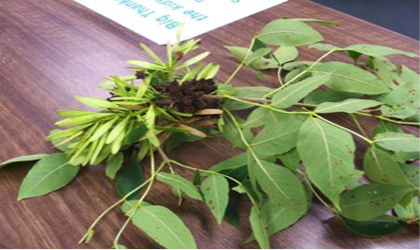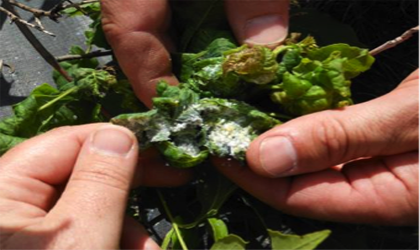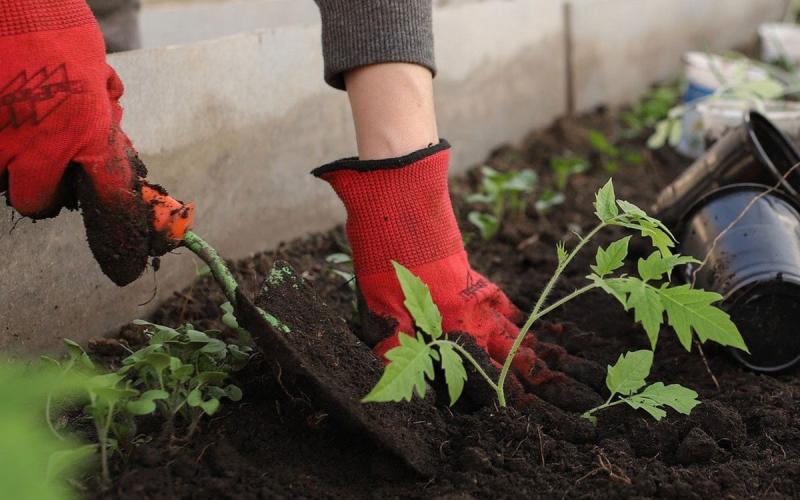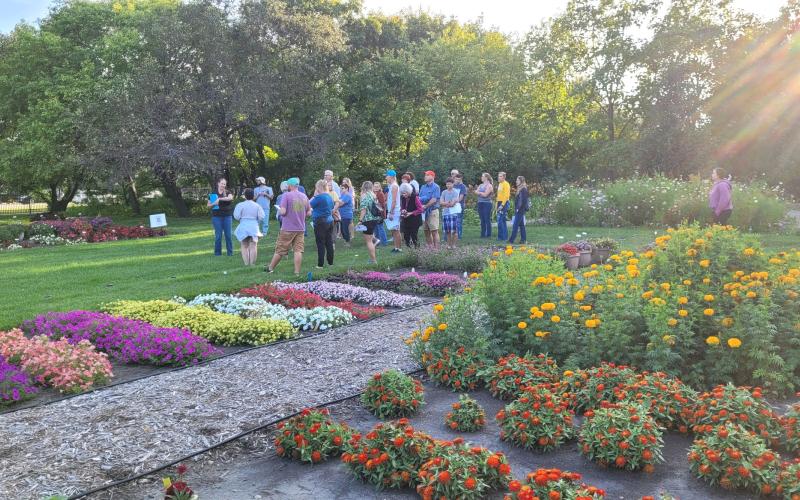Ash Flower Galls

Ash flower galls are appearing on the twigs of ash throughout the state. The brown to black “balls” hang in clusters beneath the branch shoots. The galls are due to the feeding activity of the ash flower gall mite (Eriophyes fraxiniflora) and this mite only feeds on the male flowers of ash. Many of the black, green and white ash cultivars are “male-only” as most tree owners do not like to deal with cleaning up the small winged samaras that develop from the female flowers. However many trees, such as this one from Tripp County, have both male and female flowers, as you can see the galls and the samaras in the picture. The galls may be objectionable and detract from the appearance, but do not harm the health of the tree.
Ash Leaf Curl Aphid

The ash leaf curl aphid, also known as the woolly ash aphid (Prociphilus fraxinifolii), is showing up across the state again this year as it frequently does each summer. The symptoms are curled leaves forming rosettes at the ends of ash shoots; particularly the rapid growing terminal shoots. If you unfolded the leaves you’ll find these little “fuzzballs” that are aphids. You might also find lady beetle larvae that are feeding on the insects. Management is usually either letting it be – since no treatment will uncurl the leaves and the lady beetles do a pretty good job of control – or applying an insecticide containing imidacloprid as a soil drench. This is an effective means of having the insecticide absorbed into and throughout the canopy of the tree and will kill the insects as they feed on the leaves. Most insecticides are contact poisons and will not reach the aphids living inside the curls. Unfortunately, the soil drench should be made before you see the damage; this means it should be applied in early June so perhaps best just to note this on the garden calendar as a treatment to do next year.


